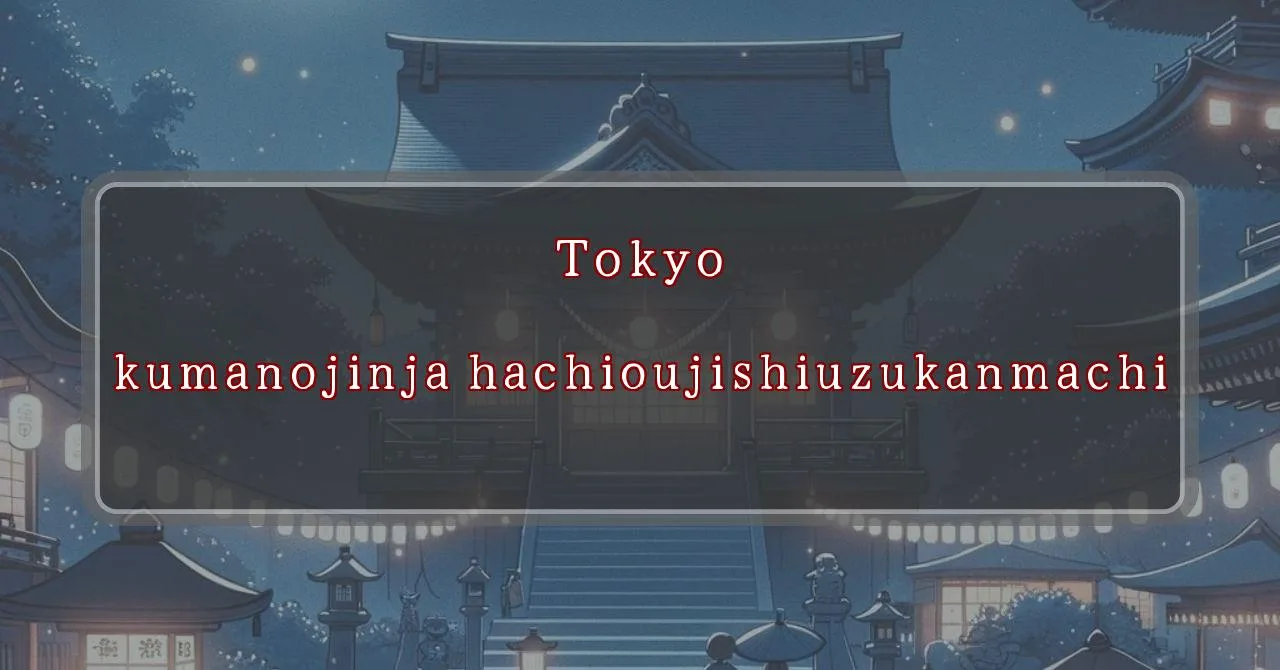Gleaming lights, divine music, lively parade
Basic Information
I’ll write an overview.
- Address: 1028 Utsunukamachi, Hachioji-shi, Tokyo
- Phone Number: 042-692-2241 (Kumano Shrine Office)
- Access: 10-minute walk from JR Yokohama Line Hachioji Minamino Station
- Festival Days: August 26th (Sat), 2024
Main Events and Attractions of the Festival
Kumano Shrine’s annual festival is held on August 26th, and many events and attractions take place during this time.
Children’s Mikoshi Parade
Overview: A lively and colorful parade featuring children carrying a portable mikoshi shrine.
- Content: Children carry a portable mikoshi shrine through the town.
- Features: A chance to witness the enthusiasm and energy of the local children.
Kagura Performance
Overview: A traditional Japanese performing art that combines music, dance, and storytelling.
- Content: Performers wearing elaborate costumes enact stories from Japanese mythology.
- Features: A captivating and visually stunning performance that showcases Japan’s rich cultural heritage.
Food Stalls
Overview: A variety of food stalls offering a wide selection of delicious Japanese cuisine.
- Content: Stalls selling traditional festival foods such as takoyaki, yakisoba, and cotton candy.
- Features: A great opportunity to sample some of Japan’s most popular street foods.
Bon Odori Dance
Overview: A traditional Japanese folk dance performed during festivals and other celebrations.
- Content: Participants dance in a circle to the rhythm of drums and music.
- Features: A chance to join in on the fun and experience a traditional Japanese dance.
Blessings and Deities
Kumano Shrine is dedicated to the deity Susanoo-no-Mikoto, a powerful and revered figure in Japanese mythology. He is known for his strength, courage, and ability to ward off evil spirits. Worshippers at Kumano Shrine pray for his blessings in various aspects of life, including protection from harm, success in endeavors, and good health.
- Deity: Susanoo-no-Mikoto
- Blessings: Protection from harm, success in endeavors, good health
Origin and History
The exact origins of Kumano Shrine are shrouded in mystery, but it is believed to have been founded during the Edo period (1603-1868). The shrine has undergone several renovations and expansions over the years, and the current honden (main shrine building) was constructed in 1856. Kumano Shrine has long been an important place of worship for the local community, and it continues to attract visitors from all over Japan.
- Founded: Edo period (1603-1868)
- Honden (main shrine building) constructed: 1856
Tips and Notes for Visitors
If you plan to visit Kumano Shrine during its annual festival, here are a few tips to make the most of your experience:
- Arrive early to avoid crowds, especially if you want to see the children’s mikoshi parade or the kagura performance.
- Wear comfortable shoes, as you will be doing a lot of walking.
- Bring cash, as some of the food stalls and souvenir shops may not accept credit cards.
- Be respectful of the shrine and its customs. For example, avoid talking loudly or taking pictures inside the honden.
Parking Information
There is no dedicated parking lot for Kumano Shrine. However, there are several coin-operated parking lots in the surrounding area. You can also park at the nearby Hachioji Minamino Station and take a 10-minute walk to the shrine.
- Dedicated parking lot: None
- Nearby coin-operated parking lots: Available
- Parking at Hachioji Minamino Station: 10-minute walk to the shrine
Popular Stalls and Food Carts in Recent Years
| Type of Stall | Description |
|---|---|
| Takoyaki | A staple at Japanese festivals. Characterized by a crispy outside and a creamy inside. |
| Jaga Butter | A simple yet popular snack of hot potatoes lavishly topped with melted butter. |
| Baby Castella | Small castella cakes, sweet and fluffy treats enjoyed by children and adults alike. |
| Grilled Ayu with Salt | Fresh ayu fish grilled whole with salt, a savory taste of Japanese summer. |
| Shaapin | A unique gourmet item influenced by foreign cuisine, with a chewy skin wrapping the filling. |
| Okonomiyaki | A Japanese grilled dish where you often choose your own ingredients for a personalized flavor. |
| Cotton Candy | A fluffy, sweet snack that’s extremely popular with children. |
| Chocolate Banana | A banana coated in chocolate, a fun and visually appealing dessert. |
| Kushiyaki | Various types of ingredients skewered and grilled, an easy-to-enjoy snack. |
| Yakisoba | Fried noodles mixed with a special sauce, a fast food favorite in Japan. |



